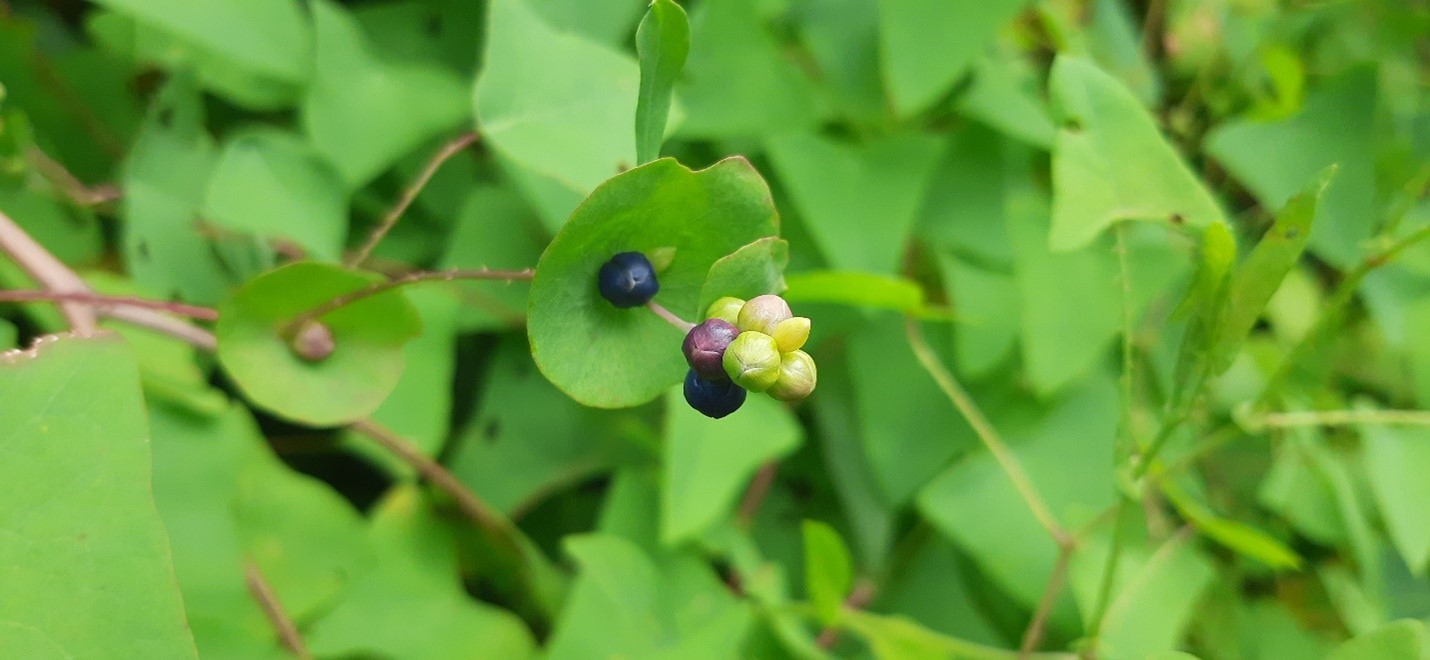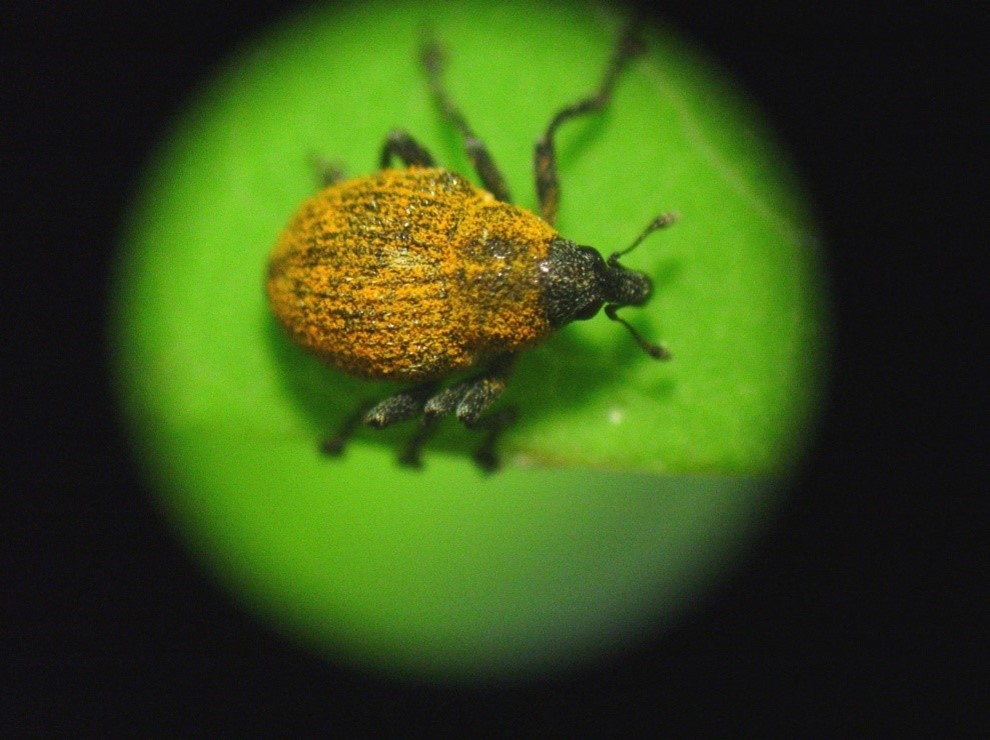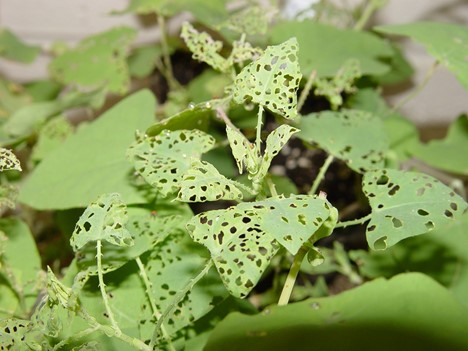Mile-a-minute Biocontrol
New Jersey residents can register with us for the 2025 season and receive a 50% discount on their first 500 weevils! Contact Cynthia.Detweiler@ag.nj.gov to register. *Only one offer per landowner or organization*
Purchasing information for non-NJ residents can be found on the Available for Purchase Page
About the Pest:


Mile-a-minute weed (Persicaria perfoliata) is a trailing vine with triangular leaves and curved barbs along the stem, petioles, and leaf veins. Ocreae surround the stem at each leaf node. It grows rapidly in direct sunlight growing up to 15 cm per day and up to 6 meters in a growing season. The plant produces seed clusters that turn blue when ripened. Mile-a-minute greatly reduces plant diversity, out-competing native species by reducing available sunlight.
Life Cycle and Appearance:

Rhinoncomimus latipes is a small, black weevil that is host specific to Mile-a-minute weed. The weevil feeds on the weed as both juvenile and adult, causing substantial damage to the plant. As an adult feeds, its exoskeleton may begin to turn color from the formation of an orange coating. R. latipes lays its eggs on the leaves and stems of the weed. When the eggs hatch, the larvae burrow into the stem at the leaf nodes where they remain until fully grown. The larvae then exit the plant and drop to the soil to pupate. When the adults emerge from the soil, they begin to feed on the leaves, mate and lay eggs.
Biocontrol Benefits:

As the larvae feed inside the Mile-a-minute stems, they disrupt transport of water and nutrients through the plant. Adult feeding on the leaves reduces surface area for photosynthesis. This leads to dieback of the vine and reduced seed production.
 Official Site of The State of New Jersey
Official Site of The State of New Jersey